Encountering the Götavi Grid

I first stumbled across the Gõtavi grid in a paper entitled Nine Paces from Hel: Time and Motion in Old Norse Ritual Performance by the archaeologist, Neil Price. I’d been down a rabbit hole researching eschatology, its possible relationship to mortuary behavior, and how it may be reflected in funerary archaeology. This, by the way, was all thanks to a dream I’d had, which I’ve blogged about before due to its initiatory nature. But just to give you the TL;DR version: I was carried down a Hel-Road and interred in a mound where I had a nice chat with the dead. Among the topics we’d chatted about was the advice to pay attention to how the land is shaped for the shape of the story being told. Or in other words: the setting reflects/is made to reflect the story. Given that they weren’t telling me to go out and murder someone or wife-swap like John Dee, I decided to get on that.
I remember reading through the section of Price’s paper discussing the grid with fascination, with this ember of excitement flaring to life deep in my belly along with a knowing that this was a thread I needed to follow.
And so follow it, I did.
A Quick Note on Threads, Gnosis, and the Process
Now you probably already noticed the gnosis sneaking in. This is one of the main reasons why I find it impossible to separate research from “woo.” As I said in my last two posts, they have never been entirely separate for me.
I am a thread-tugging Cat, and I will tug the shit out of any threads I’m inspired to go tug on.
But here is where things can get precarious.
Because if you’re not careful, the excitement can take over, making it easy to lose sight of where you began. And as with all things magical for me when every fiber of my being is shouting, ”GO DO THE THING NOW, YOU KNOW THIS SHIT IS GOING TO WORK!”, it becomes a drive.
Now, I’m going to be honest here: it can be really tempting to blow off the research phase and get right down to the experimentation. But trust me when I say it’s not worth it. In my experience, the rewards are always so much better when you see the process through.
So what do you do?
You tell that excitement “Not yet!”, you get to work and write everything down as you go. Write down your research and the sources you worked from. Write down the gnosis that crops up as you research. Be honest what came from where. All of it will likely come in later anyway, regardless of where you got it from.
So, let me tell you about this grid!
Describing the Götavi Grid
The grid I’m referring to here was found at a place called Götavi, in what was once the historic Swedish province of Närke. Götavi is thought to be a theophoric toponym, or a place name that refers to or bears the name of a god/s. When I was first researching this site, the only meaning I encountered was the one given by Neil Price. He translates Götavi as “sanctuary of the gods,” but I should mention here that the meaning of Götavi is still disputed by Swedish scholars (Price, Nine Paces, 182; Vikstrand, Ullevi och Götavi, 60-64). Don’t worry, I’ll refrain from posting a summary of the main theories about Götavi and the surrounding arguments. In the interest of full disclosure, I only managed to access them after the initial research phase, and well. I’m not going to pretend I found more than I did in this post.
So, back to the grid! It’s rectangular in shape, measures 15 x 18 meters (or roughly 49 x 59 feet), and was constructed in a salt marsh some time in the late tenth to mid-eleventh centuries (Common Era).Interestingly, the grid was buried under a layer/platform of clay, which would have hidden it from participants when the site was in use (Price, Nine Paces, 183).

This Devil’s Hopscotch was composed of nine parallel lines/enclosures packed with stone, as well as a stone-packed square in one corner. The site is oriented along a SW/NE axis—which I’ll discuss later. And there is a slight, bowl-shaped depression at the center (Price, Nine Paces, 183).
Along each of the short sides of the grid, there is evidence of timber fencing, as well as evidence for additional wooden posts, especially at the NE end of the grid. Though archaeologists (rightfully) hesitate to assign meaning to this site, there is little doubt its purpose was ritual in nature. Chemical analyses conducted on the clay surface show large amounts of fat and blood along the NE end, and especially near where the wooden posts would have stood. Evidence of further deposits (probably food remains), was found in the SE sector of the grid (Price, Nine Paces, 183; Svensson, Götavi – en vikingatida kultplats i Närke, 69).
So, that’s the long and the short of the grid in terms of its physical characteristics.
(It’s a rectangle, get it? Never mind.)
However, here is where we magic practitioners need to part ways with the archaeologists and scholars. Our foci and goals—our destinations, in other words—are too different to stay on the same path. Their task is to learn about the past from surviving evidence. And it would be inappropriate for them to assign meaning or make declarations of “What It All Means” (Price, Performing the Vikings, 71). However, as I discussed in the first post of this series, my goals are quite different. To reach them, I need to pull enough from the sources to develop practical experiments and hopefully have experiences which I can then evaluate and further refine into workable practices.
In many ways, this is like reenactment, only without the cool period garb. What differentiates my work from the reenactor (aside from garb), is that I need a working theory related to meaning and magical mechanics before I start.
Performing Ritual and Cosmology in Land
At the beginning of this post, I mentioned a dream I’d had in which I was dead, got carried down a Hel-road and interred in a mound, and had a nice little chat with the dead. As I said at the beginning, a big part of their message was that there is a connection between how the land is shaped and the shape of a story.
The story they were referring to was eschatology.
When most think of eschatology, they think about the end of the world/s. However, eschatology can also be the final things of a human life as well. This is a huge topic when you think about it, encompassing everything from the afterlife and the journey to get there, to necromancy, psychopomps, the possibility of rebirth, and the shape of a human soul. When I first read about the Götavi grid and its features, I was immediately reminded of this dream and began thinking about the grid in eschatological terms. There are a few source-based reasons for this (which I will go into), but ultimately, it felt like I was on the right path.
Despite my main driver being little more than a gut feeling, I knew I wasn’t alone in working from the perspective of story and setting. Ever since the archaeologist Anders Andrén demonstrated that the imagery on a group of Gotland picture stones could be “read” like sequential episodes from the story of Sigurðr, archaeologists have begun to examine mortuary behavior in terms of performing and representing narrative/story as well. The picture stones commemorate the dead and are generally set between property boundaries. They are neither in-field nor out-field. But what’s really striking about Andrén’s findings, is that the story is told intergenerationally, with the stone from each generation depicting a “chapter” (Price, Performing the VIkings, 64-65).
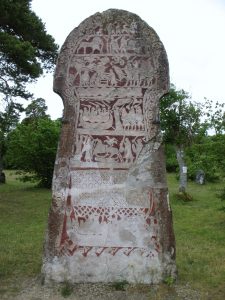
Which, let’s face it, is kind of shit that you had to wait until someone died to catch the next episode. And we thought mid-season hiatuses sucked!
The consideration of story and setting isn’t limited to mortuary behavior and funerary archaeology either. Terry Gunnell, for example, writing on the origins of Norse drama, argued that some of the mythological material was written with performance in mind. And Olof Sundqvist has made the case for applying that same framework to the remains of cultic sites such as Gamla Uppsala (Sundqvist, The Temple, the Tree, and the Well: A Topos or Cosmic Symbolism at Cultic Sites in Pre-Christian Northern Europe?).
So, with all of that in mind, what made me think the “story” of the grid relates to eschatology?
Well, you know…aside from my gnosis and gut feeling.
Evidence For An Eschatological Story
Islands and Mounds
As I said above, the grid was constructed in a salt marsh and would have been hidden to observers thanks to that clay covering. This location would have also made the site a de facto island (albeit a pretty underwhelming one).
But this island-like construction may be significant in and of itself. In his paper Holy Islands and the Otherworld: Places Beyond Water, Eldar Heide demonstrates a long association between islands (as places that exist on the other side of water), and Hel and/or the Otherworld in Northwestern European textual sources. The evidence Heide cites isn’t limited to textual sources, though. He also points to a number of physical sites, such as the Iron Age graves on uninhabitable islets in Northern Norway and the relatively common occurrence of grave fields separated from living people settlements by streams.
Most relevant to us however, is Heide’s argument for considering burial mounds a parallel to those islands of the dead, citing archaeological pollen analyses conducted in the ditches surrounding the mounds of Borre. To summarize the findings: water plants grew in some of them there ditches.
What do you call a burial mound surrounded by a ditch filled with water?
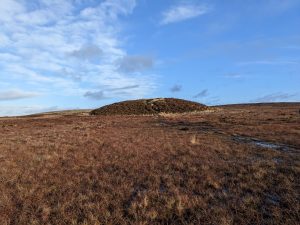
A PITA to get to and roughly fifteen minutes in the shower to warm your feet again when you get back!
Sounds like an island of the dead to me!
(And as someone who originally came from an island Procopius labeled as one big hangout for the dead, I think I know an island of the dead when I see it.f)
The Number Nine
The most obvious feature of this “Devil’s Hopskotch” (never not calling it that btw), is the pattern. Probably the easiest way to describe it is as a square with nine other shapes around it on all sides.
“Three,” as De La Soul once sang, “is the magic number.” But if you’ve been Heathening for any amount of time, you probably already know that nine is symbolically potent and (dare I say it?) a magic number in Old Norse sources. Rán has nine daughters, Heimdallr has nine mothers (don’t ask me how that works), Mengloð has nine maidens, and Gróa has nine spells (Price, Nine Paces, 184).
We also see the number nine in contexts related to death and/or the dead. For example, that one time in Völuspá 53 and Gylfaginning cha. 51—you know, that when Þórr gets a venom shower from Jörmungandr—he walks (staggers?) nine paces before dropping dead (Dronke, The Poetic Edda, 22; Sturluson, Edda, 54). Another example of the number nine being the magic (dead) number can be found in Gylfaginning cha. 49. This is when Hermôðr does everyone a solid after Baldr gets unalived by riding for nine nights to the river Gjöll on his way to Hel (Sturluson, 50.) And Gylfaginning cha. 34 tells us that Hel was “thrown into Niflheim” and given authority over nine worlds, or as they’re also known, “the worlds you can die in” (Sturluson, 27). Catchy, right?
But don’t worry, little brother, there’s more!
You’ve all heard of Óðinn, right? That whole thing in Hávamál vs 138 where he hung on a “windswept tree” for “nine days and nights,” while “pierced by a spear.” Sound familiar?
(By the way, don’t try that at home!)
Well anyway, we’re also told that he’s sacrificing “himself to himself.” If there’s anything Baldr’s story and the boss battle called “Ragnarök” can teach us, it’s that gods can die. So, it’s not unreasonable to assume a god can die from this whole “hanging from a tree while stabbed” business. Moreover, we’re told the tree is “windswept,” which adds another layer of symbolism to the scene. As Maria Kvilhaug points out, there are clear associations between wind and death, and windlessness and immortality in Old Norse Poetry. Maria’s interpretation of “windswept”? Deadly AF (Kvilhaug, The Seed of Yggdrasill, 662).
So we have nine nights on the tree, nine nights on a Hel-ride, and nine paces before a god dies—all examples of the number nine and its connection to the journey to Hel.
SW Orientation
Another significant feature of the grid is its SW/NE orientation. This orientation seems to be particularly associated with the dead or sites associated with the dead. In Doors to the Dead: The Power of Doorways and Thresholds in Viking Age Scandinavia, Marianne Hem Eriksen, which is an absolute banger of a paper (if you’re into that kind of thing), provides several examples of this SW/NE orientation in conjunction with sites associated with the dead (such as burial mounds). Hem Eriksen is all about the doors in that paper, so she focuses more on doors than other forms of access (like causeways).
One specific example she gives is of the catchily named “mound 30,” in Helgö, Sweden, which has a portal/threshold structure constructed to its SW. This is not the only example she gives, though. Hem Eriksen also points out that archaeologists have identified at least 80 examples of SW portals associated with mounds or other kinds of graves. And interestingly—like the Götavi grid—the majority of them contain no human burials.
A different kind of site she discusses with this orientation, is the grave field structure known as the Åby portal. Evidence suggests this was a large, pentagonal, free-standing monument constructed in the SW corner of a grave field, with a doorway in the SW of the structure. As you can see, they were really sticking to that SW theme. Unlike the grid though, the Åby portal does contain a cremation burial, which is clear evidence of its association with the dead. You know…if the grave field location wasn’t enough for you.
Going back to that Gylfaginning episode where Hermóðr missions it through a bunch of deep, dark valleys, we also discover that after you get to the river, Hel is in a “northward” direction from there (Sturluson, 50). So, okay, Peter Pan’s directions aren’t the worst out there. And it’s not NE exactly, but the idea is that Hermóðr (AKA the living god-person) is riding from the south to interact with the dead.
Posts?
You know, there’s a series of roundabouts in my hometown where the local council have gone absolutely hog wild erecting posts in that area. You’ve probably already heard the term “wonder of the world.” Well, take whatever comes to mind when you hear that term and imagine the antithesis, and it may get you close to the level of underwhelm I’m talking about here.

As I mentioned earlier, posts feature in the grid as well. Archaeologists have found evidence of a number of posts in the grid, especially in the NE. The Götavi grid however, isn’t the only post-containing site with features that also potentially connect it with the dead.
Enter: Lilla Ullevi, or the “little sanctuary of Ullr.”
Again, we have an usual stone feature that looks like a trapezoid shape with “legs” on the aerial photos. Archaeologists have interpreted it as a platform. But I’m not here to talk about that right now; I’m here for the posts.
Because the evidence suggests that there were actually more posts at Lilla Ullevi than at the aforementioned series of roundabouts in my hometown. If you happen to be a fan of erect wooden poles jutting out of the fecund earth, then you probably would have fucking loved Lilla Ullevi.
This place seems to have been a hive of activity back in the day. There’s a theory that the platform was a seiðhjallr, which sounds like a stretch. But seeing as archaeologists found the basket-like part of an iron “staff of sorcery” just outside the southern edge of the platform, that isn’t too wild (Price, Nine Paces, 182).
(I use double quotations here, because this is the usual interpretation of these objects vs certainty.)
Now, Lilla Ullevi didn’t just have posts, there were groups of posts. (Hooray!) The platform itself is oriented east-west (depending on how you look at it), but evidence suggests activities took place north-south. Around 15m east of the “platform,” there’s evidence of a north-south line of posts—my favorite! The area to the south of the platform seems to have been the place to be (unless you were the theoretical völva in this situation). There’s an area of baked soil south of the platform that had fires burned on it over and over again. And there’s evidence for groupings of 3 posts with 60 iron rings buried in the ground in lines between the groupings of posts. Archaeologists also found miniature shield amulets along with lances, arrows, and fire steels in this area too. And if that wasn’t enough, roughly 36 knives were found dug down into the dirt around the stone platform as well (Price, Nine Paces, 182).
Smells like apotropaic use of iron against the dead to me! (Here’s a paper about that very thing if you’re curious.) Either way, the south seems to have been the place for the ordinary living to hang out. That was my point there.
And sure, while we don’t know that the presence of posts are an indication of necromantic activities, I figured it was worth mentioning anyway.
Fat and Blood
Finally, there are the fat and blood stains in the NE of the grid to consider. Given the orientation, I’d expect these to be related to the dead in some way. But while there is evidence for feasting with cooked meat at graves/sites suggestive of graves, I think there’s a more useful parallel in the account of necromancy in The Odyssey.
Think: less BBQ with the dead and more “satiating the dead with blood.”
In book 11, lines 30-50, Odysseus decides to get his necromance on. He begins by digging a pit, which he fills with offerings to the dead. Then, he sacrifices a number of sheep, slitting their throats and allowing their blood to flow into the pit, while calling on the dead. After that, a whole load of rando dead people show up, which is pretty par for the course in these stories. Odysseus shits himself (figuratively, not literally like Cellini’s friend) and uses his sword to keep the dead back (apotropaic use) until he gets to talk to Tiresius (Homer, The Odyssey, 280).
Færeyinga Saga: A Potential Match?
So far, I’ve talked a whole lot about the possible meanings of the various features of the grid. However, the best evidence by far (at least in my opinion), that the “story” of the grid pertains to eschatology, comes from Færeyinga saga cha. 41. In this scene, a bunch of people are trying to find out how someone died, and so this guy called Þrándr sets up the following ritual:
“Þrándr had great fires made up in the hall, and had four hurdles (?) set up to form a square. Then he marked out nine enclosures from the hurdles, in all directions, and he sat on a stool between the fire and the hurdles.”
(Davidson, The Road to Hel, 161)
From there, the dead show up, they figure out how their boy Sigmundr Bretison got unalived, and then they get back on with their bullshit.
But just look at that description again.
Four hurdles set up to form a square. Nine enclosures from the hurdles in all directions.
What does that sound like? Could it be this?
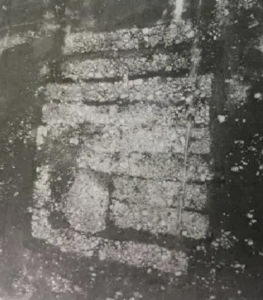
What Might This Tell Us?
Now, assuming that the grid pattern found at Götavi and Þrándr’s grid are one and the same, we can make the following five conclusions:
- That the grid or some of the uses for the grid are necromantic in nature.
- Given the symbolism of the features discussed and the contexts in which they appear, the grid possibly functions by mapping out or opening up the passage between the worlds of living and dead. To return to Odysseus: when you believe the dead reside underground, digging a pit might be thought of as meeting them halfway.
- Physical remains are not necessary to interact with the dead.
- Grids can be created on a temporary basis; they are not bound to any one place.
- The grid was a potentially known/recognized method for interacting with the dead beyond Närke.
This is exactly what I meant earlier when I said the rewards are better when you see the process through. Because now, we don’t just have a solid possible “story” for the setting that is the Götavi grid, we also have a bunch of other details and a framework for ritual mechanics as well.
In other words: all things we can use to cook up an experiment.
Final Words
So, first of all, congratulations for making it this far. This was a long-ass blog post, but unfortunately, splitting it up didn’t really seem feasible. In the next (hopefully much shorter) post, I’m going to talk about the process of putting my first grid experiment together, the further considerations I took into account, and how I went about constructing the grid. Unsurprisingly, it was super underwhelming compared with building a little island in a salt marsh, but unless I get some marshland and a construction crew, it’ll have to do. On the bright side though, there’s a lot you can do with supplies from your local hardware store, and I’m going to show you how.
Anyway, take care, and I’ll ramble at you again next time.
Be well.
Find The Other Posts In This Series
Sources Used
Davidson, Hilda Ellis. The Road to Hel
Dronke, Ursula. The Poetic Edda. Vol II
Dronke, Ursula, The Poetic Edda. Vol I
Heide, Eldar. Holy Islands and the Otherworld: Places Beyond Water
Hem Eriksen, Marianne. Doors to the Dead: The Power of Doorways and Thresholds in Viking Age Scandinavia
Homer (Emily Wilson trans.). The Odyssey
Kvilhaug, Maria. Seeds of Yggdrasill
Price, Neil. Nine Paces from Hel: Time and Motion in Old Norse Ritual Performance.
Price, Neil. Performing the Vikings: From Edda to Oseberg
Sundqvist, Olof. The Temple, the Tree, and the Well: A Topos or Cosmic Symbolism at Cultic Sites in Pre-Christian Northern Europe?
Sturluson, Storri (Anthony Faulkes trans.). Edda.
Svensson, Kenneth. Götavi – en vikingatida kultplats i Närke,
Vikstrand, Per. Ullevi och Götavi


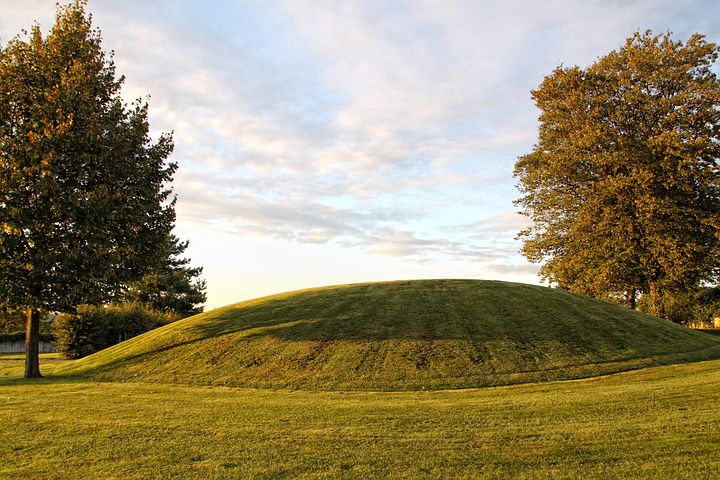
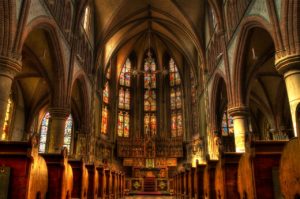

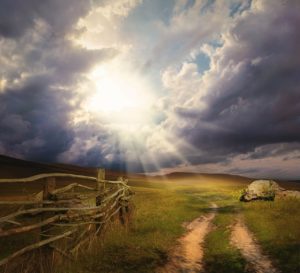 thought the same thing? Finally, if your family comes from a number of different faith traditions, what (if any) common ground can be found?
thought the same thing? Finally, if your family comes from a number of different faith traditions, what (if any) common ground can be found?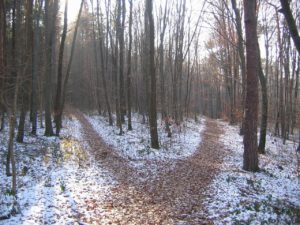 more present sense. So I usually suggest that we include ways to meet them “halfway” in our ritual design. Historical accounts and evidence give us multiple examples of these “halfway” places that can be recreated in ritual. Crossroads,
more present sense. So I usually suggest that we include ways to meet them “halfway” in our ritual design. Historical accounts and evidence give us multiple examples of these “halfway” places that can be recreated in ritual. Crossroads,  have this whole bastardized ritual involving stuff I also found in a dream that would melt a purist’s head.)
have this whole bastardized ritual involving stuff I also found in a dream that would melt a purist’s head.)